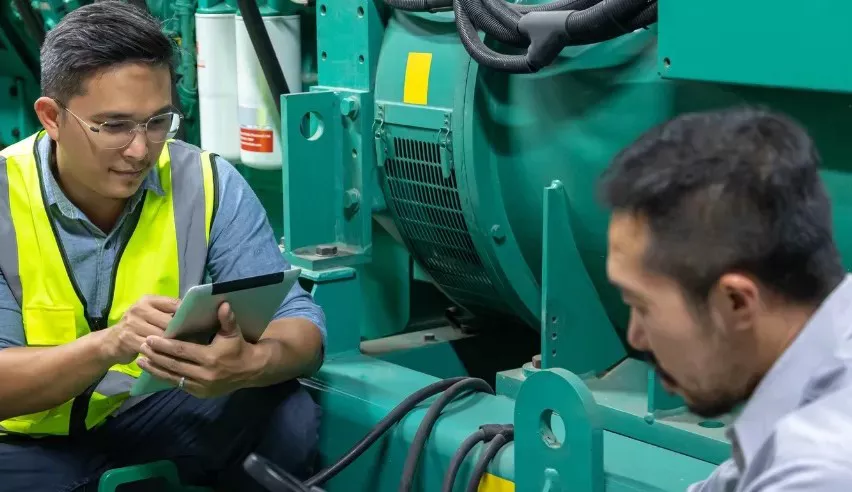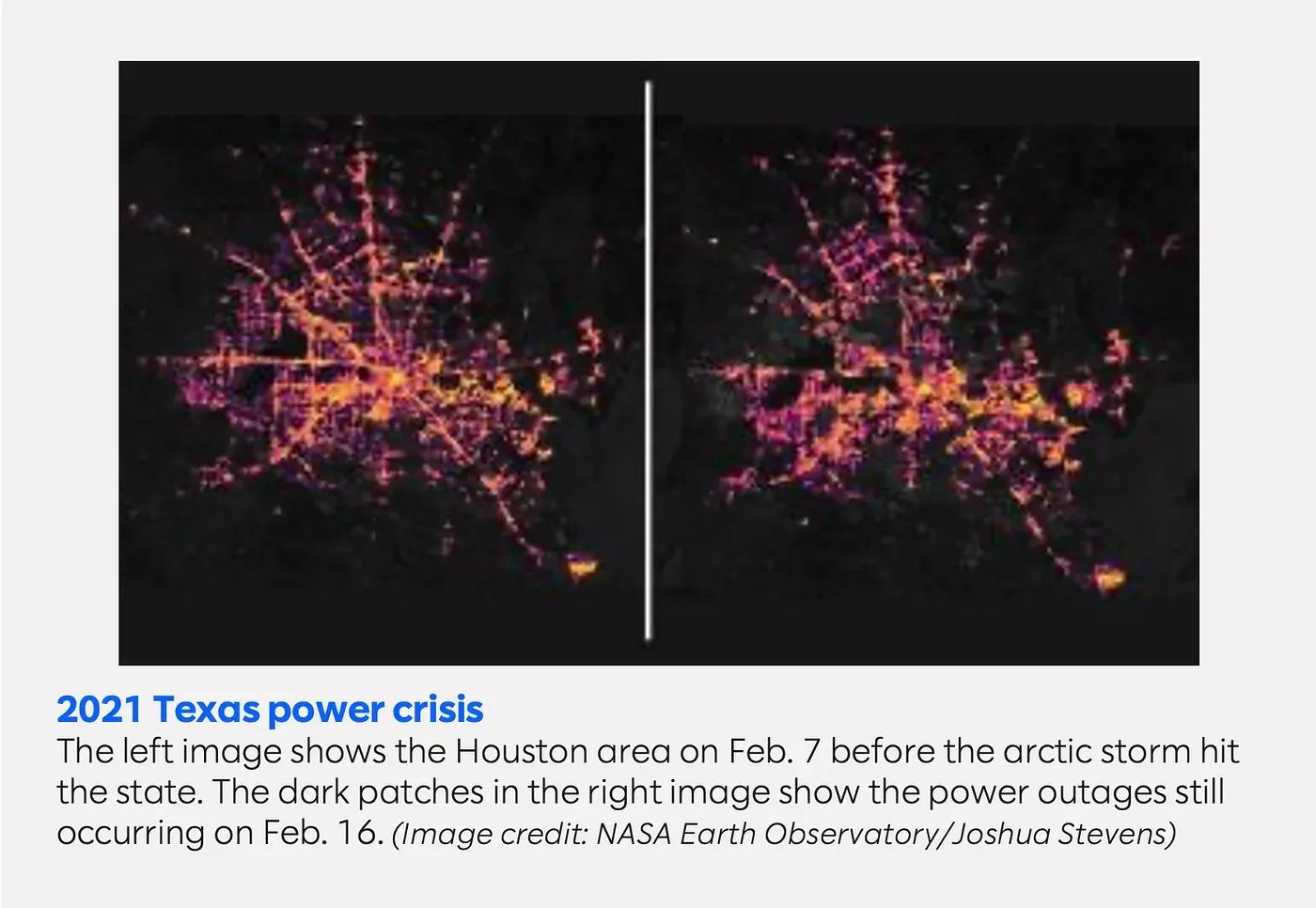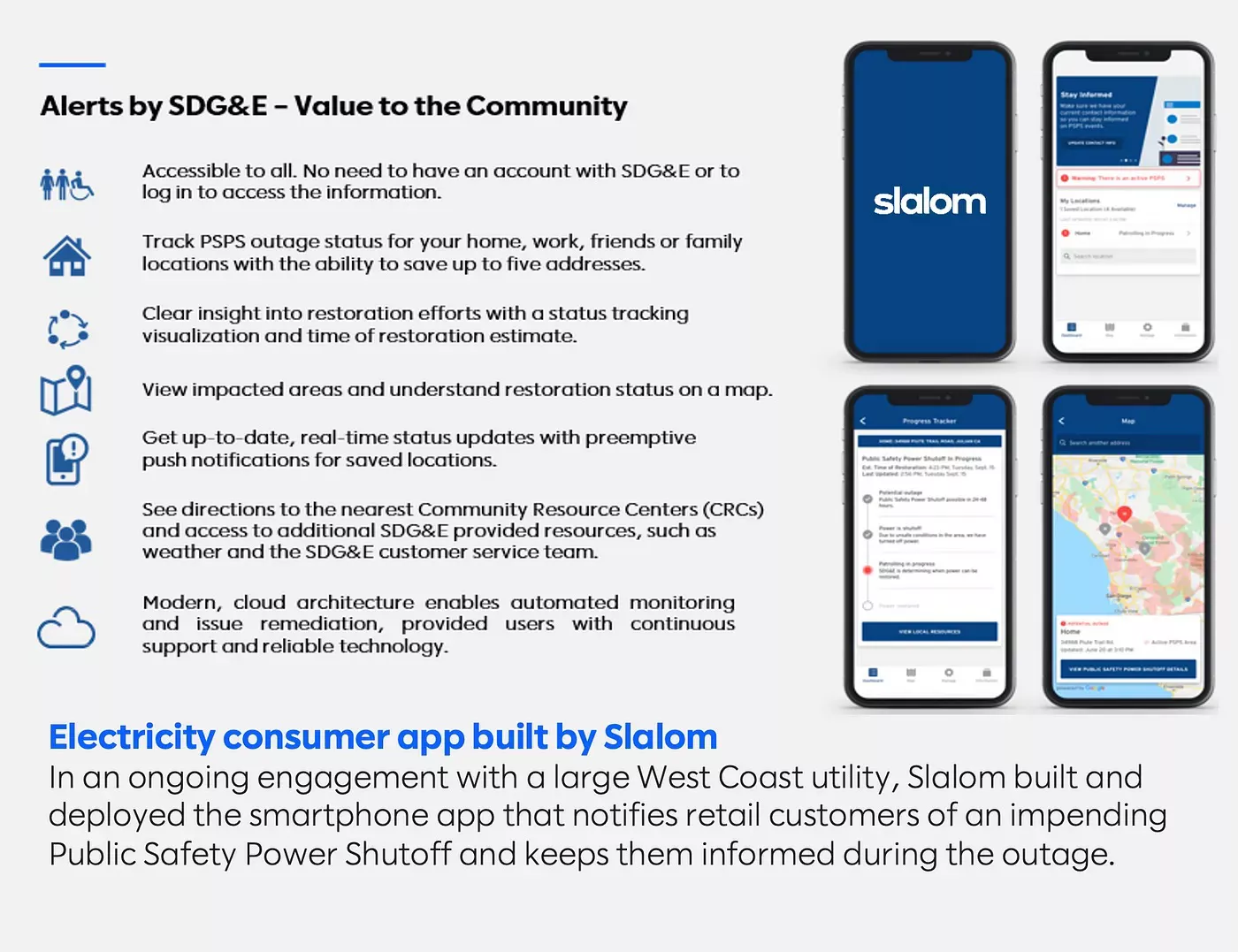Intermittency: The challenge of renewable generation
 Balancing intermittency plays a major role in the future of renewable energy.
Balancing intermittency plays a major role in the future of renewable energy.
Generation that relies on the sun and the wind is subject to variability, which can occur in an instant and persist for days. A portfolio of carbon-free generation technologies will be deployed to balance such intermittency, which will likely include hydrogen-fueled devices and new battery energy storage systems. Intermittency will also increase the likelihood of forced load reductions—such as rolling outages—and so it will be critical to take steps to mitigate and manage outage events. Market mechanisms and incentives to promote intermittency-balancing solutions lag.
As a cloud passes over the 377MW Ivanpah solar thermal power system in the California desert, PG&E is immediately faced with the loss of 155MW—the electricity required to power about 58,000 homes. Later that evening, all 14,000MW of California’s solar generation capacity will fall to zero as the sun sets over the Pacific. The following morning in west Texas, the forecasted wind subsides early, leading to an unplanned wind turbine generation deficit of 1,265MW—about the equivalent of the output of a nuclear reactor at the South Texas Project, according to NRG.
These are everyday examples of intermittency when mother nature’s variability impacts the supply of electricity from renewable sources. Because the integrity of the grid requires electricity supply and demand to remain precisely balanced in real time, intermittency presents significant technical challenges, even today, with just about 10% of the US grid supplied by solar and wind resources, according to the Energy Information Administration.
What are the logical, utility-scale technology choices to balance intermittency?
Because intermittency can occur in an instant, the start or ramp time of a balancing generation source is critical. As a result, batteries are a natural starting point. There is no spinning machinery to come up to speed—just an electro-chemical process that can make electrons available in a fraction of a second. Stacks of (typically lead-acid) batteries have been the basis of Uninterruptible Power Supplies (UPS) at data centers for years. But there, the batteries’ mission has been to run just long enough for diesel generators to kick in—typically about 20 to 30 seconds. (And diesel reciprocating engines are not a welcome option in a de-carbonized world.)
That gives rise to the second critical consideration: run time. What if the intermittency event is not measured in seconds, but hours, days, or even weeks? Even the most economic battery technology, Lithium-ion, is not viable for extended run times. Other battery types—such as flow batteries—are more technically suited to running for longer periods, but none of these has ever been widely deployed.
Given extended run time considerations, the next logical option to balance intermittency would be natural gas turbines. These could be de-carbonized by blending or replacing the natural gas with hydrogen or by capturing and sequestering the carbon emitted. General Electric’s fastest-starting gas turbines—the models derived from GE aviation engines running in simple cycle mode—can ramp up at a rate of circa 50MW per minute, producing full output in about five minutes. With a reliable fuel supply, gas turbines will run efficiently for many weeks at a time.
The wider availability of hydrogen is also a potential game changer for fuel cells, which convert hydrogen into electrons through a process much like a battery that never needs to be charged. Some fuel cells (such as HyAxiom) have the ability to ramp up and down to match load, or “load follow,” which would make them an emission-free option to balance renewables’ intermittency. However, like flow batteries, fuel cells have never been widely deployed, though they have been used in spacecraft since the Gemini program.
Other fossil-fueled plants—including coal, fuel oil, and gas oil—typically take several hours or even days to ramp from a cold start to generating power for the grid. This, in combination with their carbon emissions, takes them off the table as viable options to counteract intermittency.
Nuclear power plants, by their very nature, do not cycle up and down. Once a nuclear plant comes online, it is designed to run nonstop for months at or near 100% output before shutting down to be re-fueled. As a result, nukes are not viable options to balance intermittency. However—according to Nestor Sepulveda’s thesis on the decarbonization of power systems—nuclear power has the potential to reduce significantly the need for batteries and other balancing power sources by providing non-intermittent, emission-free baseload power.
Taking a holistic view, a portfolio of technologies—stacked by ramp time and run duration—emerges as a potential solution to balancing intermittency: batteries at the top of the stack, handing off to flow batteries, hydrogen gas turbines, and fuel cells should the intermittency persist, with 24/7/365 baseload nuclear power providing the emission-free foundation. The actual solutions that will emerge over the coming decades will almost certainly have many of these elements as well as other technologies not yet identified. Further, the control systems that will coordinate and balance such grid operations in real time will be equally sophisticated.
Other issues in balancing intermittency
Technology choices are not the only issue. Market mechanisms are required to provide the economic motivation for non-utility generators to invest in intermittency-balancing devices. In the competitive PJM (Pennsylvania, Jersey, Maryland) market, for instance, there is a capacity market that rewards power producers for maintaining excess generation capacity in a standby mode. This model, however, was not designed for real-time needs induced by renewables. There are also markets for ancillary services, which are focused on frequency and voltage regulation across the grid, but the current illiquidity in these markets prevents them from being useful in managing risk associated with long-term capital investment in intermittency-balancing generation.
There are also questions as to who will own and operate these assets and where they would be best located. Likely owners include utilities and independent power producers (IPPs). But as new technologies emerge, so do new players who do not fit the traditional “old energy” mold. Regarding location, the US federal tax code offers investment tax credits (ITC) for energy storage systems only if they are sited near and charged directly by renewable energy sources. This has resulted in battery storage facilities being sited in areas where the price of property is very low—a critical factor for solar and wind arrays requiring hundreds or thousands of acres—typically very far from urban centers (load pockets) where energy storage systems would be most useful.
What should utilities do?
Utilities and generators will naturally focus on the hardware side of the intermittency problem, building portfolios of renewable and non-intermittent generation assets. Nonetheless, intermittency will increase the likelihood of forced load reductions, such as rolling outages. As a result, it is equally important to address customer-focused impacts and solutions, such as:
1. Proactively define, analyze, prioritize, verify, and frequently update all load data. This may be the most important lesson from the February 2021 deep freeze weather event in Houston, when more than 200 people died from hypothermia and carbon monoxide poisoning. Inaccurate, incomplete, and misunderstood customer load data led the utility to cut power to critical natural gas infrastructure (which led to even more power outages) while empty downtown office towers remained fully illuminated. Minimizing the impact and duration of these outages are critical elements of a utility’s license to operate.

2. Build and offer customized—even personalized—demand response programs. Armed with the complete data set defined above, create customer-specific demand response programs tailored to balancing intermittency. All customer types should be included—commercial, industrial, and residential. Keep in mind that a fully charged Tesla S is a 100kWh battery on wheels.
3. Keep your customers informed before, during, and after an outage. Experience with utilities managing wildfire risks and Public Safety Power Shutoff (PSPS) has shown the importance of engaging with customers and keeping them informed during outages. Customized apps—for business customers, residential customers, and critical infrastructure/first responders—are an efficient and elegant way to achieve this objective. In addition, customers could use the app to opt into and even customize their own demand response program within a defined range of options—a bit like building your own Dell computer.

These three steps together form the foundation of a best-in-class outage prevention, mitigation, and resolution platform. They are useful for all outage types–not just those induced by renewable generation intermittency.
This blog post was originally published here.


